Book review: Seeing the Good in Unfamiliar Spiritualities
by Gethin Abraham-Williams
★★★★★
If Gethin is not a poet, then certainly his love of poetry shines. Verse mixes with prose to lend richness throughout. I think this is a book which should be read outdoors, in the squares of our busiest cities or beside the brooks of our remotest parks.
It’s about God, our perception and experience. It meanders thoughtfully around the topics of faith, mercy, sexism, and hell, on its journey to “reaching middle ground” between the various world religions. The stability of our society rests on “mutual respect, and a genuine attempt to understand and to appreciate the other, to detect the voice of God in the other, and to pursue a thoughtful, caring life with the other.”
Religious thought is evolving, but the evolution of our understanding of God has been a gradual process, and we are by no means at the end of it. Enchantment is coming back into vogue, and society may be experiencing sacralization rather than secularization. Many of us yearn to “feel the Greatness and the Glory, and all those things that begin with a Capital Letter,” but we’re unsure how to proceed. The closer we approach the mystical (though not the magical, that stuff is evil, right?) the further away we appear.
Gethin’s gimmick of threading the story of Ezekiel throughout the discussion is what makes the book real. I laugh out loud as I write this, but it is so; Gethin doesn’t feed us the wild-eyed, theatrical Ezekiel most of us avoid, but the human, struggling-to-understand-it-all Ezekiel. The Ezekiel strolling mournfully beside Babylon’s Tigris, dreaming of Israel’s Jordan. For all his extraordinary visions, Ezekiel never actually gets to see God.
This book is a joy to read, and one to fill our dreams with hope.

Book review: Why Four Gospels? The Historical Origins of the Gospels
by David Alan Black
★★★★★
Very good. This is a concise, well-organized explanation of the historical and textual arguments for David Black’s Fourfold-Gospel Hypothesis and an early writing of the Gospels. It’s a conservative treatment; David’s purpose in writing is to “renew, restore, and strengthen faith in the truth of the Gospels by providing scientific support for the church’s continuous teaching on their apostolicity and historicity.
I have been looking for a simple guide to the argument for apostolic authority and the traditional ordering of the Gospels, and this one does the trick. Relying heavily on the testimony of the early church fathers, David presents a reasonable scenario for the development of the Gospels. It is not David’s claim that the fathers of the church solve the synoptic problem; it is that any approach that rejects their testimony is lacking. A hypothesis is needed that does justice both to critical scholarship and to the integrity of the church fathers.
Matthew’s Gospel came first, written in Greek. It was a response to a need within the early church (years 33-44) to preserve the story of Jesus. But Matthew’s version, while highly respected in Jerusalem circles, didn’t fit the bill for Gentile readers, and Paul commissioned Luke to rework the Gospel message for the benefit of his own Greek churches. Luke was able to “change the whole emphasis of the Gospel into a demonstration of the good fortune of the Gentiles in being given equality by Jesus with the original chosen people.”
Peter happened to be in Rome at the time of Paul’s captivity, so Paul met with Peter and asked his advice about Luke’s new gospel. Peter was happy to compare the two (Luke and Matthew), and since it was his plan to give a series of speeches in Rome, he took both together and, with Mark in attendance, fitted them into five lectures which Mark preserved in writing. These lectures are recorded in Mark 1:2-3:19, 3:20-6:13, 6:14-10:1, 10:2-13:37, and 14:1-16:8. Peter’s intent was to refer only to those portions of Jesus’ life of which he had been an eyewitness and could personally vouch for. Thus, there exists no birth stories or resurrection narratives in Mark.
Those who listened to Peter were delighted with what they heard, and requested from Mark copies of what Peter said. Peter allowed this, and Mark’s Gospel was birthed. The final twelve verses of the gospel (which are not in the earliest manuscripts) were surely added by Mark at a later date, when he decided to publish the gospel as an act of piety to the memory of Peter.
That’s the way David fits the puzzle pieces together, relying heavily upon the patristic evidence, and it explains the internal data “at least as well as the Markan priority hypothesis, and often much better.” It also explains the need for three Synoptic Gospels. David then goes pericope-by-pericope through the Gospels explaining how Mark was pieced together from Matthew and Luke, and while I didn’t take time to study his analysis, it’s nice to know he did his homework.
While I’m not a conservative believer and have no issue with Markan priority (as proposed by the popular solution to the synoptic problem), and while a number of issues remain unresolved (such as Matthew’s apparent familiarity with the events of 70 CE), I found this a very helpful review of the patristic evidence for traditional beliefs.

Book review: Blurring the Lines
by Jerry Zehr
★★★
Fun, short little book! Thomas, a naive young man from an Amish heritage, moves to Los Angeles hoping to pursue a career in acting. The Amish connection isn’t overplayed; Thomas is a pretty normal fellow, but breaking into this business is tough, and earning enough money on the side to survive proves difficult. He falls in with the wrong crowd, and his innocence plays against him until his experiences begin to bring more than shame; they land him in danger, both for his life and with the law.
Thomas is lucky, though, to have developed a special friendship with a man who encourages and provides spiritual guidance, while downplaying Thomas’s mistakes. We can assume Thomas would drift ever deeper into darkness were it not for this mysterious acquaintance. The ending is surprising and memorable, though in retrospect, I really should have gathered enough clues during the story to guess the climax.
This is Christian literature, though Zehr’s outlook is not conservative and the language is a bit rough. Part of Thomas’s growing-up includes learning to look at God differently. Nothing monumental or overly deep, though, and the story’s brevity prevents a fully-developed plot. This is a good book for teens.
On the downside, the book starts out in quite passive prose, so it doesn’t grab you from the opening. Do keep reading! Also, I was given a pre-edited version, and a few editing and formatting corrections would be expected for the published version.
Book review: Romans: The Divine Marriage
by Tom Holland
★★★★★
First, my apologies to Tom and PICKWICK Publications for taking so long on this review. The thing is, reading Holland’s take on Romans is like reading a foreign letter. So unfamiliar is Holland’s corporate spin that it took me forever to get through the book … not just because it’s a comprehensive work, but because I wound up reading several passages twice to pull myself away from the more common individualistic interpretation. You’ll learn to recognize two distinct, corporate communities at odds with one another: one in Adam with sin as its head, the other in Christ with Jesus as its head.
This is a verse-by-verse study of the book of Romans, and would make a good university text. Remember: Romans is Paul’s magnum opus, with every verse saturated with meaning. I try to write reviews appropriate for casual readers, but this book belongs in academics as well. Not only is every verse explored, but Holland delves into several topics in detail. I think there are nine such “excursions” peppered throughout the text.
Now, Tom is a conservative believer, so I don’t quite see eye to eye with him on every topic, but his research is deep and not at all preachy. Holland bemoans the way other scholars tend to interpret the New Testament by relying on Greek secular literature, instead of appreciating its Hebraic flavor. “The only allusions or echoes we can safely consider are those which reflect the Old Testament literature” (quotation reprinted without supporting context, which is substantial). So, he digs deep.
This book could sit on your shelf for reference, but that would be a misuse. Holland’s particular interpretation really requires analyzing the letter as a whole. Themes of corporate justification, Passover, the second exodus, and the pilgrimage of God’s chosen resonate throughout, and these underlying themes set the tone for Paul’s more confusing passages. Baptism (dying and rising with Christ) carries a different meaning in this light. Even the word “sin” gets a remake with a corporate meaning: Paul sees sin as a predator, waiting to attack and kill. Try replacing the word “sin” with Satan throughout to get a better grasp of Paul’s meaning. Remember the Adamic community? That’s Satan, not sin, at its head. Also as you read, I suggest you keep the book’s title uppermost in your mind: The Divine Marriage. We’re talking about the eschatological marriage with its great cosmic banquet. Paul’s theology is so deep that it’s easy to lose track of the fact that he really is going somewhere in this letter.
My favorite discussion in the book was Holland’s exposition of the following passage: 10:6-7 But the righteousness that is by faith says: “Do not say in your heart, ’Who will ascend into heaven?’” (that is, to bring Christ down) “or ‘Who will descend into the deep?’” (that is, to bring Christ up from the dead.) After a ten-page explanation, these two verses finally makes sense.

Book review: DMT, the Spirit Molecule
by Rick Strassman, M. D.
★★★★★
Absolutely fascinating! Suspend your skepticism for a few hours and enter the incredulous world of Strassman’s research with a powerful hallucinogen. DMT, sort of a fast-acting LSD, was used in DEA-approved clinical research at the University of New Mexico between 1990 and 1995, where volunteers repeatedly described experiences similar to near-death and alien abduction reports.
The question is this: Are the experiences entirely psychedelic, or is the drug allowing volunteers to tap into another reality, where aliens really do exist? Strassman takes the question seriously, and while the implications are more than a little disturbing, the volunteers “unquestionably had some of the most intense, unusual, and unexpected experiences of their lives.” (After reading the case studies, I can believe it.)
Strassman connects DMT with the pineal gland, the “house of the soul.” The pineal gland develops in the human fetus 49 days after conception, with its DMT chemical secretion serving as a portal to astral worlds. OK, this is wayyy outside my comfort level and not something I know anything about, yet I can’t help it: This is a five-star book, guys, even though it steps on some religious toes. Skip ahead to part IV, The Sessions, if you must, and then come back to read the rest after your mind is blown.
Strassman presents his data like a research doctor, and he admits that one of his deepest motivations behind the DMT research was the search for a biological basis of spiritual experience. He went into this research already intrigued with the pineal gland, so his hypotheses are not unexpected. His application was entirely professional, with intravenous injections under strict supervision—this is not an experiment that can be undertaken at home. The experiences are kaleidoscopic and often frightening. Yet I couldn’t help wonder how many people, after reading this book, found a way to obtain the drug and jump into the next universe. I sure wanted to.

Book review: The Reality Bible
by Ash Vaz
★★★
Too much! Far too much is covered in this book to provide even a basic grasp of the concepts presented. Ash’s intent seems to be not to explain, but to mystify and bewilder, as he carries us on a journey into the science of the world around us … and of worlds far away. Ash isn’t a scientist, he is a “metaphysics thinker and phenomenologist” who isn’t shy about contradicting scientific theory. There was no big bang; a steady-state universe is more consistent with the facts. Relativity is unhelpful as a theory because light dwindles over distances. Forget about e=mc2. The moon doesn’t cause tides. Gravitational forces don’t exist (at least not as expected) because the earth doesn’t crash into the sun.
Instead, all is explained by forms of energy. Other planets can produce biological cells, but only earth produces multi-cellular life, and this is important … we are the key. Everything exists because we can think. Through our thoughts, we conceptualize God, energy, everything.
The book’s most frustrating flaw is its difficult readability. Sentences read like clusters of big words with few relative pronouns. “Astronomy informs star centers with cores of helium atoms exhaust protons over billion years.” “The postulated colossal universe appearing from a point, terminating everything inside, and simultaneously abetting the creation of existences outside is preposterous thinking.” You’ll get used to the writing style about the time the book ends.

Book review: From Adam to Noah: The Numbers Game
by Leonard Timmons
★★★
What do the ages of the first humans in the Bible mean? Could people really have lived that long? Leonard Timmons has found an ancient calendar hidden in these numbers, and feels this discovery is key to understanding the Bible.
Timmons’s calendar is constructed by charting, on a timeline, the births and deaths of the men between Adam and Noah, fudging a little here and there to create a few more meaningful points on the timeline, and then discovering that it breaks down into four portions of 364 years plus one 5-year portion. Turn that into days, and you have a 364-day year, plus a 5-day seasonal correction after four years (think of our leap day). 364, for calendar aficionados, is the Jubilees calendar from the Qumran texts, so-liked because it plays nice, dividing neatly into 52 seven-day weeks.
Timmons’s analysis is founded on arithmetic combinations of round numbers (such as 500 or 1000) and of the number seven. Lamech’s age at his death, 777 years, appears to be a clue. For example, 56 is a nice number because it is 7×7+7. 84 is an excellent number because it is 77+7. Seven is recognized as God’s number, a perfect number, the number of days in the week. Readers of Revelation are quite aware of how important seven, and in particular three sevens (777), are in Biblical thinking.
Timmons is correct that numerology was important to the ancients, often used as a means of Biblical enlightenment. Consider the 666 of Revelation, and the miraculous catch of 153 fish by Jesus’ disciples. Timmons takes a stab at solving both of these riddles, which might be a mistake on his part; while no convincing solutions to the second puzzle have been offered, making the 153 puzzle fair game for speculation, scholars are nearly unanimous and surely correct in solving the 666 puzzle. (See http://www.dubiousdisciple.com/2011/01/revelation-1318.html and http://www.dubiousdisciple.com/2011/01/revelation-1318_27.html ) In any case, I would not be surprised at all to discover that there is meaning in the ages of the earliest humans in the Bible. It’s far more likely that the numbers have some sort of meaning to the authors than that people actually lived that long! However, even after reading Timmons’s book, a hidden calendar code seems a bit too conspiratorial for my taste. Timmons may be on the right track with his “meaningful numbers,” but attributing the whole thing to a hidden calendar doesn’t feel right to me.
That is, however, the book’s premise: Not only is there a calendar hiding within the ages of the earliest humans, but it has been purposefully hidden. This is not just numerology, it’s a devised puzzle, and (in my opinion) an inelegant one. The authors were not content just to lay out a calendar; they carefully hid the calendar, purposefully confusing us, swapping the meaningful number 56 here and there with 65 (the reverse of its digits) to confuse us, doubling and halving numbers here and there to bewilder us.
So who imbedded these puzzles? Perhaps collators of the Bible while in Babylonian captivity, or shortly after they returned to Jerusalem? That sounds somewhat believable, but Timmons thinks not; he argues instead that the Bible should be thought of as an ancient educational textbook for the enlightened, a sort of test to divide good puzzle-readers from bad. The Bible is a book of riddles to help the initiate develop his talent for insight. We’re not just talking about the creation stories; the Bible’s authors have encapsulated hidden knowledge in its texts from Genesis to Revelation! An “insight school” that lasted a thousand years! (Timmons actually suggests thousands).
Timmons rejects the Documentary Hypothesis (which proposes that the Torah was written by at least four distinct authors, none of them Moses). I cannot help but think he commits another error by pitting his puzzle theory against the Documentary Hypothesis; it seems far more reasonable to me that the Documentary Hypothesis disproves the ancient textbook idea rather than vice-versa.
Anyway, the hidden calendar is not really the important thing. It’s just a discovery that should prompt us to read the Bible differently; to reveal to us the surprising intellect and understanding of its authors. Free now to explore a deeper meaning in the scriptures than a literal reading, Timmons next launches into his interpretation of the Bible’s themes; how the ancients thought of demons, angels, soul, spirit, faith, even God … and it’s nothing like what we thought they meant. This insight helps Timmons decode stories like the Flood and the Garden of Eden, and he provides two creative and fascinating interpretations. Even Jesus’ parables and Revelation’s mysteries are revealed.
I found the book to be an interesting fringe theory, and fun with numbers (right up my alley), but not something I found convincing. However, my feeling is that there is surely a 4- or even 5-star book idea here, that Timmons’s interpretations are ingenious, but that he overreaches by claiming them to be the correct interpretation … as if the Bible writers actually meant their stories to be read this way.

Book review: How God Became King
by N. T. Wright
★★★★
Wright begins with the creeds, about Jesus being born of a virgin and dying for our sins, and bemoans the “missing middle.” Christianity today has become too focused on the beginning and end of the Jesus story, and has ignored a primary message of all four Gospels: that God has come back, in the form of Jesus, and reigns today as King.
So who is the Jesus in the middle? A violent revolutionary? A wide-eyed apocalyptic visionary, expecting the end of the world? A mild-mannered teacher of sweet reasonableness? If he was one of the first two, Jesus was deluded. Even if it’s the third case, Jesus was similarly deluded, because most of his followers from that day to this have been anything but sweetly reasonable. Instead, they have busied themselves inventing dogmas (like the virgin birth and the resurrection), writing creeds, and establishing the church.
Thankfully, none of these Jesuses match the Gospels. Wright is sick of scholars and books which portray Jesus as a good Jewish boy who would have been horrified to see a church spring up in his name. He wants us to see Jesus the way the Gospels tell the story, as God coming down to be King of the earth. Wright’s guns are blazing in this book (his passion took me rather by surprise), firing at liberals and feel-gooders. God is no doddering old boss who used to run the company but has since been banished to a cozy upstairs office where he can sit and imagine he’s still in charge. God is king. The story of Jesus is the story of how Israel’s God became king.
Wright’s approach this time is not at all objective. He is a believing Trinitarian, and speaks out against the popular opinion that the high Christology of John is a later development. From the beginning, the Gospel story has been about the divine Jesus, Son of God, God Himself. On Mark’s very first page, the story of Jesus’ baptism, we find “every bit as high a Christology as John’s, though it is a high Jewish Christology.” Wright also discusses Matthew’s viewpoint and Luke’s viewpoint, in each case pointing out the evidence that they considered Jesus divine. Wright never quite nails down his definition of Christ’s divinity … none of this “Jesus is God” direct approach, just as no such claim exists in the scriptures … but we should make the association in some mystical way. For Wright, this verse in Luke says it all:
“Go back to your home,” said Jesus, “and tell them what God has done for you.” And he went off around every town, declaring what Jesus had done for him.
In the end, I am fully behind Wright’s view that the Gospels present Jesus as the fulfillment of God’s return to earth as King, and in my own mystical way I confess to be sort of a Trinitarian, but I simply can’t buy the argument that all of the Gospels contain the same high Christology as John’s Gospel. There are too many opposing arguments that Wright fails to address.

Book review: Bullheaded Black Remembers Alexander
by J. L. Taylor
★★★★
This didn’t have the focus on ancient beliefs that I was anticipating, but it addresses runaway religion in a roundabout way. Alexander the Great’s loyal horse, Bullheaded Black, dies in the war against India, and from a winged vantage point up in heaven narrates his version of Alexander’s dreams and victories. We hear straight from the horse’s mouth what Alexander was thinking and what was behind his great drive for conquest.
Alexander’s personal tutor, Aristotle, teaches him an appreciation for natural sciences and inquisitive learning. Alexander loves the writings of Homer and its wonderful stories of heroes and gods, but Aristotle cautions against unwarranted belief. “The written word is valuable and it is ancient and it is powerful, but that doesn’t make a book completely true. Let no book and no person ever close your mind to reality, not even the epics, not even Homer.”
Yet Alexander was born a warrior. Horses are not real big on war, but B.B. reigns in his criticism, instead focusing on the positive side of world domination. Alexander becomes a proponent of religious tolerance, much to the frustration of his comrades. Much of the story centers around his personal quest to understand his anointed place among men and gods … and which gods. Is he really the son of Zeus? In Egypt, he seeks out the oracle of Siwah, and though he’s closed-mouthed about what he learned there, he returns from this personal pilgrimage even more confident of his destiny. It turns out he is not only the son of Zeus, but of Amon and of Ra. Says Alexander within earshot of his horse, “It seems the principal gods are one.God is one. It matters not the name.”
A cute story-book read, and I enjoyed it.

Book review: Genesis People
by Sheila Deeth
★★★★★
Adorable!
If Sheila doesn’t like this word to describe her book, well, she’ll just have to get over it.
45 big-print, two-page stories introduce 45 characters from the book of Genesis, in a Dubious-Disciple-approved way. Real World, Real People, Real God, the subtitle proclaims. You’ll see what she means as soon as you start reading.
So Cain and Abel made their sacrifices. They made a fire and burned the best of the grain, and meat from the best of the animals for God. Then Cain noticed that the smoke from the meat was much thicker and smelled much nicer than the smoke from the grain. “Is that because God likes Abel more than me?” Cain asked. His mother said it was just because the fat from the meat burns hotter, but Cain wasn’t listening to her. The more Cain thought about it, the less he bothered to listen to anyone.
The book reads like one of those sunny children stories written for adults, the kind that leaves you smiling the whole way through. The back cover calls this a “middle-school reader for book-lovers of all ages, telling stories for all time.” I think that about nails it.

Book review: The Power of Parable
by John Dominic Crossan
★★★★★
Crossan ponders, “I had observed that the parabolic stories by Jesus seemed remarkably similar to the resurrection stories about Jesus. Were the latter intended as parables just as much as the former? Had we been reading parable, presuming history, and misunderstanding both?”
In other words, are the stories of Jesus really book-length parables? Crossan presents three such parables in the Old Testament: Job, Ruth and Jonah. Ruth challenges a part of the Bible, Jonah challenges the whole of the Bible, and Job challenges the God of the Bible. But isn’t there a major difference between the Old Testament books and the Gospels? Were the characters in these stories historical, the way we think of Jesus? So Crossan presents the story of Caesar at the Rubicon as “parabolic history” to show how even historical characters can be the subject of the development of parables.
Crossan separates parables by their flavor: riddle, example, challenge, and attack parables. I found the discussion of several New Testament parables insightful, but they served only as a lead-in to the bigger topic. In part 2, Crossan takes on the four Gospels each as a whole, presenting the meaning of them as book-length parables … what they challenge, what they attack.
It is not really the historicity of the Gospels that Crossan contests, but their evangelical purpose. The undercurrent of truth, or lack thereof, is not the focus of his book; it is the way the stories are bent into parable, and what these book-length parables mean. Thought-provoking and well-written, a great read.

Book review: The Origin of Satan
by Elaine Pagels
★★★★
Not a new book, but since I’ve recently received a couple more to read along this topic, I dug this one out and scanned through it as a reminder.
It’s typical Pagels, opinionated and controversial, but thought-provoking. I love Pagels’ work!
You’ll read a little about the evolution of ideas regarding Satan, but this is really not the book’s focus. Her premise is that Satan evolved over time for a reason, and that reason was to demonize one’s enemies—primarily the enemies of the Christians. No, not ancient Israel; Pagels spends almost the entire book within the context of the New Testament—an appropriate focus, since in the Old Testament Satan is more of an Adversary under God’s employ. By the time of the New Testament, though, Satan has morphed into the Prince of Darkness, the leader of all that is evil in a cosmic battle against good…a battle that found the Christians caught in the middle. Satan is the natural evolution of an us-versus-them atmosphere in the arena of religion.
Like Pagels, I find the war of 70 CE, when the Temple was destroyed and Jerusalem leveled, more than just a little important to understanding the development of Christianity. (In fact, I tend to go a bit overboard on this theme in my books). But Satan isn’t allied only with the Romans; he also takes the side of the Pharisees (read: Rabbinic Judaism), Herod, and pagans everywhere. Finally, in later Christian writings, Satan manages to seduce even Christians, and the war turns against heretics.
Fun book, and a different take from what the title may make you think.

Book review: The Questioning God
by Ant Greenham
★★★★
First, a note about what Greenham means by “the questioning God.” He doesn’t mean God wonders about the truth; he means God engages us with questions, forcing us to think for ourselves. God asks Adam and Eve, “Where are you?” He asks Abraham, “Can you number the stars?” He asks Moses, “Who has made man’s mouth?” He asks Job, “Who is this that darkens counsel by words without knowledge?”
Given that God is a questioning God, and that we are made in the image of God, Greenham encourages us to freely question as well. God would expect no less. God’s basic desire is expressed in this sentence: “I will be their God and they will be my people.” However, as individuals turn to God and become his people, it should not be a case of blind acceptance.
Greenham examines the three primary monotheistic religions, concluding that Islam discourages questioning while Judaism liberally encourages it. But there’s such a thing as questioning too much. Some questions don’t engage us with God, but dismiss him instead. The proper balance (and proper Christianity) seems to fall somewhere in the middle.
An example of how Christians should feel free to question: Consider George W. Bush’s invasion of Iraq. Christian leaders everywhere opposed Bush’s invasion plans, but their voices were drowned in a tide of patriotic endorsement. Few considered the nearly one million Christians living in Iraq. Nobody asked them what we should do. Consequently, one of the greatest catastrophes following the 2003 invasion was the loss of over half of that country’s Christian population.
Self-questioning (removing the “logs” from our eyes) is “penetrating and devastating. It is no less demanding than questioning the basis of Islam for a Muslim, or considering Jesus as Messiah for a Jew.” But Greenham does have his boundaries! It’s apparently fine for Muslims to doubt Islam, and for Jews to contemplate the possibility of Jesus as Messiah, but Greenham stops short of encouraging us to question the Christian Bible. I believe his stance is summed up by this quote:
“I tell people I teach in church and seminary setting not to believe me because I have a Ph.D., but only if they’re convinced that my teaching is biblical.”

Book review: Dancing in the Shadows of Love
by Judy Croome
★★★★★
It never breaks. The haunting tone of this book, with its aura of simmering emotion, never breaks until the final word. Ten pages into the book, I was already flipping through it trying to find a picture of the author. Who writes like this? Who names their main character Lulu?
This is about three ordinary-but-extraordinary women and their struggle to ride the waves of life. It’s about love, betrayal, lust, trust, and learning to live again. So, yeah, it’s about God.
Dancing in the shadows of love. This one kept me uncomfortable the whole time, wishing the three of them would just step out of the shadows into the light. It’s not that the plot is terribly captivating, it’s just that the words are arranged so … artfully? Grippingly? Hauntingly? Now that I’m finished (and after a sleepless night) I confess Croome is a fascinating author, and I’m terrified of the day she hands me another book to review. I know I won’t be able to turn it down.
But what is her book doing on my religion blog? Well, the problem is, an explanation would also be a spoiler. Its value is spiritual, even if its religion is foreign. But don’t worry, her Spirit King and his mysterious representative will overlay nicely atop whatever beliefs you espouse, if you do just a little stretching here and there.
Note to Ms. Croome: Page 165 still holds me spellbound. And I’m a guy.

Book review: Brain & Belief
by John J. McGraw
★★★★★
A worthwhile book, comprehensive in its treatment of the evolution of belief in the soul, and why we believe. McGraw possesses degrees in psychology, philosophy and religious studies, and he brings the three together in his writing … and in the wonderfully macabre cover of his book.
The three parts to the book are:
[1] A History of the Soul, in which McGraw leads us from our prehistoric beginnings of belief, through Shamanism, ancient Egypt, Judaism, and the famed philosopher Plato, into the development of Christianity.
[2] Part II, The Soul Matter, digs into the brain and its anatomy, the puzzle of consciousness, the effects of hallucinogens and other drugs, and illnesses such as depression.
[3] Part III, titled “Giving up the Ghost” introduces “the beautiful lie,” and attempts to carefully weigh what is gained and what is lost by perpetuating a belief in the afterlife.
I read this book several years ago, and I’m sure there are a number of other reviews out there to tell you about it, so I’d rather just quote a paragraph from part three that resonated strongly with me:
“The theologians’ heaven—singing, majesty, contemplation of God’s beauty—implies a total transformation of personhood and its context. This existence ceases to be a personal one at all and may be considered an Easter dissolution of self into the Godhead. Once everyone ceases to do personal things and engages in a standard universal, a fawning submission before ineffable beauty, one sacrifices one’s personality. At such a stage friend and lover, brother and son, all disappear. Hunger and admiration, play and sex, all dissolve into the singular experience—the singularly inhuman experience—of God worship. Every depiction of an existence worth living for disappears with the personality. Such an impersonal existence could be immortal but the person would have ceased to exist at death as surely as if he were simply mortal.” (p. 329)

Book review: Did Jesus Exist? The Historical Argument for Jesus of Nazareth
by Bart D. Ehrman
★★★★
Not too long ago, I was asked in a religious forum whether I believe Jesus really existed. I said yes, I’m 99% sure. I meant precisely that: I’m a numbers guy, and I estimate the odds that Jesus never existed to be somewhere around one chance in a hundred. After presenting a parallel (a Bible historian who is forced to make sense of his research in light of a nonexistent Jesus would be a bit like a research biologist who shows up to work one day and is told that evolution is a lie) I gave an example of the type of argument that I find most convincing. If Jesus were a made-up figure, wouldn’t the made-up stories be a bit more self-serving? Instead, for example, the Gospels tell about Jesus submitting to baptism for his sins by a competitor, a man we know from historical reports DID exist: John the Baptist. How did this whole embarrassing episode get written into the story, if it weren’t literally true?
The truth is, I didn’t know what to say in the forum. I would have to write a book to detail all the reasons Bible scholars believe Jesus existed.
Thankfully, the book has been written, and by precisely the right person: Bart Ehrman, the controversial Bible-belt professor who has no qualms about speaking his mind regarding the myths which DO exist in the Bible.
It’s not that Ehrman has no vested interest in the topic. He does. He’s been teaching about the Historical Jesus for a couple decades, and he’d have to eat some serious crow if it turns out no such person existed. It’s that Ehrman doesn’t find it necessary to play by the rules of an apologist, defending conservative Christianity. He can play dirty. For example, in arguing that the Jesus story is more than a myth similar to other legends of a dying and rising god, Ehrman is free to point out the obvious: The guys who first wrote about Jesus never in their wildest dreams thought Jesus was God. That theology came later.
I do feel Ehrman overstates his case a bit. Well, he under appreciates the opposing case, I should say, and cops a bit of an attitude as he does. When the mythicists point out that something smells fishy with all the midrash in the New Testament, I found Ehrman’s that-don’t-prove-nuthin stance a little lame. But when he gets around to presenting the arguments for Jesus’ existence, the book is superb.
Four stars for an important counter-balance in a debate that has become more heated than I would have thought. And I’m still right where I was before: 99% sure.

Book review: The Pilgrim Church
by E. H. Broadbent
★★★★★
Broadbent writes with the dramatic flair of an apologist, but with the atonal precision of an historian. This is obviously a topic dear to his heart. It’s not an exciting read, but an awful lot of data is presented, and if you’re seriously interested in the topic, you’ll find it captivating. I did, so much so that I was able to forgive Broadbent’s bias (he tends to classify everyone into three divisions: Catholic, heathen and Christian).
Broadbent was born in England in 1861, and this is a reprint of a 1935 book. Broadbent’s thesis is that God has preserved a remnant of faithful underground believers through the ages, who depended solely upon the Spirit and strict Biblical teachings, and who resisted the institutionalization of the Catholic Church. He treks methodically through the centuries from Christ to about the year 1900, highlighting individuals and groups that appear to fit the mold of true Christianity. This means meeting in inauspicious groups (usually private homes), identifying by no name except perhaps that of Christian or Brethen, and denying any reliance upon authoritative structure with the exception of local guiding elders (Christ alone is the “head” of the church). These tiny Christian gatherings objected to taking the name of anyone as their founder. Seeking to mimic only Bible teachings, they refused to venerate the cross, denied transubstantiation, discouraged infant baptism and sprinkling, and most important of all, displayed a willingness to stand true in the face of great persecution. So many thousands of believers died for their convictions that I quit counting. Broadbent is particularly appreciative of Christian martyrs, so much so that he seems to consider it a primary identifying mark of the “Pilgrim Church.” Constantine’s conversion afforded no relief, since persecution only intensified under the Catholic Church. Systematic beheading, burning, and drowning persisted throughout church history.
The rest of my review will give you a run-down of Broadbent’s favored selections. In the first couple centuries of Christian development, Broadbent praises Origin and appears sympathetic to the Montanist movement, perhaps because of their emphasis on direction by the Spirit. He uncovers an anonymous letter sent to Diognetus which provides not a word of doctrine, but mimics the tone of the earliest believers. The letter indicates that Christians “pass their days on earth, but are citizens of heaven,” enduring all things as if foreigners even in their own land.
Broadbent denounces Arianism, but praises Athanaius for “maintaining a valiant witness to the true divinity of the Savior.” Priscillian kept true, but Augustine was a man of good intentions with “strong affections and quick and tender sympathies” who nevertheless departed from principles of Scripture. In particular, Augustine was unable to embrace the Donatists. From the third to the fifth centuries, true Christians kept their distance from four false teachings: Manichaeism (attributing the natural world to an evil creator), Arianism (which taught that Jesus is not God manifest in the flesh), Pelagianism (which denies the sinful state of man), and Sacerdotalism (dependency upon the Church for salvation).
Several early movements do display evidence of the Spirit’s leading, though. Broadbent approves of the Paulicians, Bogomils, Waldenses (Vaudois), Albigenses, Lollards, and others. Broadbent explains: “No authority of any man was allowed to set aside the authority of Scripture. Yet, throughout the centuries, and in all countries, they confessed the same truths and had the same practices.” The Waldenses in the Alpine valleys especially earned Broadbent’s praise. Waldensian “apostles” (a travelling ministry) left property, goods, home and family to travel in simplicity, without money, their needs being supplied by the believers among whom they ministered. They always went two and two, an elder with a younger man. The name “Friends of God” was often given to them.
These collections of believers rarely named themselves, but were named by their opponents. One exception is a period in the seventh, eighth and ninth centuries when some were wont to name their elders after men of the Bible, and their gatherings after churches of the Bible (Achaia, Philip, Colosse, etc.) All claimed apostolic tradition, some believed in apostolic succession through the laying on of hands. Yet one must be very careful in rightly divining which groups are Godly, because such groups are invariably slandered, and one must read between the lines of the smears. As with martyrdom, a prime determinant of a Spirit-led church is one which the Catholic church denounces.
Around the time of the Reformation, the Pilgrim Church blossomed. This is not due to Luther’s influence, for though Luther began on the straight and narrow, he didn’t fully return to the Scriptures. Perhaps the growth of the Pilgrim Church can be attributed to a period of little persecution, or perhaps to the printing press and the ready availability of translated Bibles. Even so, they never used written prayers; instead, an elder among them would “begin to pray and continue for a longer or shorter time as it may seem suitable to him.” They memorized the scripture in their mother tongue from much reading. They held seven points of faith, including a Triune God and that this God chose for Himself a spotless church. Among this resurgence was found the Anabaptists, Mennonites, Puritans, and Lollards. Clusters of believers sprang up in place after place, known among themselves as “the Friends,” but derisively called Quakers. Relief from persecution was again short-lived; Anabaptists were tortured or banished from their homelands, and seldom were there less than a thousand Friends in prison at a time.
These groups were not of one mind on all points, such as whether it was appropriate to bear arms, but they were of like character and appreciation for the Bible’s primitive teachings. John Wesley, an influential Christian figure, nearly adopted the righteous teachings of a group named the Moravians. A Methodist group in North Carolina took the name of “Republican Methodists” but soon rightfully abandoned the name, acknowledging no head of the Church but Christ, and no creed or rules, but accepted the Scripture alone for their guidance. Soon after, a similar movement originated among Baptists. The “Christian Connection” formed. These movements, although arising independently and only discovering each other later, held much in common. Even in Russia, a group began to form, forsaking their church for “meetings,” calling each other brethren. They were reproachfully labeled “Stundists.” In Hungary, Yugoslavia, Bulgaria and Romania numerous congregations sprang up calling themselves Nazarenes, and living quietly below the radar.
As groups proliferated, a new danger surfaced; that of the ease in which any particular spiritual movement could crystallize into a sect. In the 19th century, John Nelson Darby was influential in teaching a humble Spirit-led church, encouraging the independence of each congregation, though he later shifted from that ground and adopted the Catholic position of an organized body of churches. Many churches followed Darby into error, condemning others and excluding all churches outside their own circle subject to central authority, but others endeavored to carry out the principles of Scripture, refusing to cut off one another but recognizing that minute differences—particularly non-scriptural differences—did not necessitate division. Broadbent concludes his research with a plea to recognize the Church as One, members of one Pilgrim Church, acknowledging as our fellow-pilgrims all who tread the Way of Life.

Book review: The Good Heart: A Buddhist Perspective on the Teachings of Jesus
A discussion led by The Dalai Lama
★★★★
The premise for this book is fantastic! Talk His Holiness, the Dalai Lama, into speaking before a Christian audience in Middlesex University, London. Call it The Good Heart, emphasizing the humanitarian aspects of both Christianity and Buddhism. Give him eight passages of Gospel scripture to read in preparation for the seminar, and hear what he has to say.
The eight chosen passages are:
From the outset, The Dalai Lama assured his listeners that he had no intention of sowing seeds of doubt, and instead encouraged listeners to “experience the value of one’s own religious tradition.” He taught that the authentication of all religion is the realization of a good heart. He acknowledged similarities between Christianity and Buddhism, especially in regards to compassion, brotherhood and forgiveness, and strongly encouraged meetings between people from different religious traditions (not scholars but “genuine practitioners” interested in “sharing insights”). Yet he feels it does a disservice to both religions not to acknowledge their uniqueness. The Dalai Lama would rather we remain Christian than try to “put a yak’s head on a sheep’s body” and call ourselves Buddhist-Christians.
He spoke, as always, with insight and humility, and his take on Christian scriptures was wonderfully fresh and simple. My respect for the Dalai Lama increased even more. Yet I was a little disappointed; invariably, the discussion of Christian scriptures steered into comparisons with Buddhism—to be expected, I’m sure—but Buddhist thought is so ingrained in the Dalai Lama that much of the discussion felt foreign to me. Not that I couldn’t follow his thinking, and not that I don’t appreciate the similarities between Christianity and Buddhism and their common goal of compassion, but Eastern thinking is just … well … different.

Book review: The Case for Christmas
by Lee Strobel
★★
This little book is excerpted from an earlier 1998 book by Lee Strobel: The Case for Christ. Like others of the series, Strobel’s MO is to interview other believing scholars and present his findings as a sort of scientific approach to uncovering the truth about Jesus.
Let me start by saying that I’ve never found much inspiration in Strobel’s “The Case for …” series. It feels to me like he demeans the beauty and mystery of Christianity by trying to bring it down to earth, proving the unprovable. But when I noticed this little book attempting to prove the Christmas story, my curiosity won out. There are many valid arguments against the two conflicting birth stories in the Bible, and nothing whatsoever that I could think of as evidence for treating them literally, so I couldn’t resist.
Strobel got on my wrong side right away with a blatant misquote of the Gospel of John:
John, who begins his gospel by eloquently affirming the incarnation—that is, “the Word,” or Jesus, “became flesh and made his dwelling among us” on the first Christmas.
At least Strobel knew where to drop the quotation marks! But the reference to “the first Christmas” is misleading and untrue to John’s Gospel. John wants nothing to do with the virgin birth, instead pointing out multiple times that Jesus’ father was Joseph. Conservative Christians may read the birth stories in Matthew and Luke, and then read the incarnation story in John, and naturally try to overlay the two, but this would insult John. John’s theology is one of eternal pre-existence, not of a miraculous birth, and John clearly describes the moment of incarnation at the Jordan river … not at birth.
Strobel never does provide proof of the virgin birth, but rather attempts an indirect route, disproving the debunkers. Luke tells the story of Jesus’ miraculous birth, so Strobel stokes Luke as a careful historian, pointing out many places where Luke has been proven accurate, and uses that to deflect a major problem in Luke’s report: That governor Quirinius and King Herod seem to serve simultaneously, though Herod died ten years before Quirinius arrived as governor. Strobel’s “proof” that Luke’s account is historical: a coin dated to 11 B.C., bearing Quirinius’s name. Perhaps there were two governor Quiriniuses? But the rumor is absolutely not true; there exists no such coin, and Strobel should have done his homework. Strobel also neglects to mention the obvious: we know precisely who governed Syria in the years surrounding Herod’s death. It was Quintilius.
Strobel jumps into the argument over whether Isaiah prophesied a virgin birth or whether the original Hebrew says only that a child will be born to a young woman. It’s a fun argument, but totally irrelevant, because just a few verses later, Isaiah makes it clear that he’s not predicting an event hundreds of years in the future, but in his own lifetime.
Strobel’s best attempt is to argue for an early writing of the Gospels and traditional authorship. Then he deduces that these authors surely would not misrepresent the story so quickly after Jesus lived, because there would be others around to correct them. He manages to uncover one reasonable scholar (Blomberg) who agrees with this dating. The vast majority of Bible scholars do not.
Strobel concludes that everything in the scripture about the Messiah has been fulfilled, and this proves Jesus’ identity. I am growing so tired of hearing this. Any knowledgeable Jew would be totally baffled by this claim, because Jesus didn’t fulfill any of the prophecies important to them! He didn’t gather the Jews back to Jerusalem, he didn’t rebuild the Temple, he didn’t reestablish the Jews as God’s favored people, he didn’t bring world peace, he didn’t unite the entire world in worship of one God, the list goes on. Perhaps we believe Jesus will come back and do all these things someday, but can we quit saying Jesus fulfilled the prophecies? He most assuredly did not … not in the political way the Old Testament expected.
I’m starting to get argumentative, so this is probably a good place to close. Can we just leave things to faith which belong in the realm of faith?

Book review: Revelations: Visions, Prophecy & Politics in the Book of Revelation
by Elaine Pagels
★★★★★
Look. If Pagels writes a book, go buy it. You don’t need a review, you just need a reminder that it’s ready for purchase. But then I’d feel like I wasn’t doing my job, so …
I’ve been looking forward to Pagel’s new book, hoping I would read her views on how to interpret Revelation, but this wasn’t her focus. Pagels begins by discussing the apocalyptic writings of the early Christian period. The title, Revelations, is not a misspelling of the final book in our Bible; she really does mean “revelations” in the plural. She highlights several other visionary writings, including The Revelation of Peter, The Secret Revelation of James, and The Secret Revelation of John. It turns out the unexpected focus didn’t disappoint me.
Pagels then progresses through the next few hundred years of Christianity, detailing how Revelation was received (or not!) by the Church, the argument over its authorship, and how its prophecies were used to bolster or condemn. Irenaeus and Justin the Philosopher strongly championed John’s Apocalypse, both of them certain that its promise of tribulation could be seen plainly in the Christian persecution they were already witnessing. Tertullian praised John for the courage to portray Rome as Babylon, “proud of her power, and victorious over the saints,” but damned and doomed. Even Constantine got in on the act, claiming that his rival, Licinius, was represented in Revelation by the dragon. Constantine wrote in a letter to Eusebius that he had restored “liberty to the human race” after he drove “that dragon out of public administration.” Still, the vengeful book of Revelation barely squeaked into the Christian canon.
In the few instances where Pagels does attempt an interpretation of the original meaning of Revelation, her perspective is strongly influenced by her exhaustive studies in the Gnostic Gospels—the Nag Hammadi findings—and this emphasis shines a different light on the topic. For example, she compares Revelation to 4 Ezra (the Revelation of Ezra), a Jewish book somewhat contemporary with Revelation. Revelation is Christian, Ezra is not. But because she dates them concurrently (early 90’s) and notes their similarities, she lets one aid in the interpretation of the other.
I loved the book, but I can’t help contributing my two cents. I disagree with her approach to interpretation, believing that we can date Revelation to perhaps fifteen years earlier, so its teachings should stand more firmly on their own. History and Christian thought were changing rapidly during this period, and even fifteen years makes a major difference. One example: In a discussion of the hated “Babylon” in Revelation, I believe its original meaning referred not to Rome, but to Jerusalem. Only later, when Revelation’s dreams failed to quickly materialize, did Christians lose interest in Jerusalem and shift to interpreting Babylon as Rome. Far more clues point to Jerusalem as the original intended meaning, and I think I’ll run a blog series shortly with the arguments for Jerusalem. Keep an eye on my blog at www.dubiousdisciple.com.


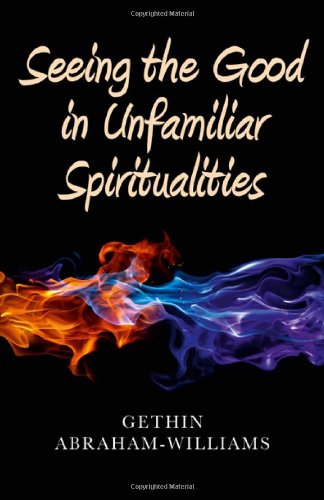
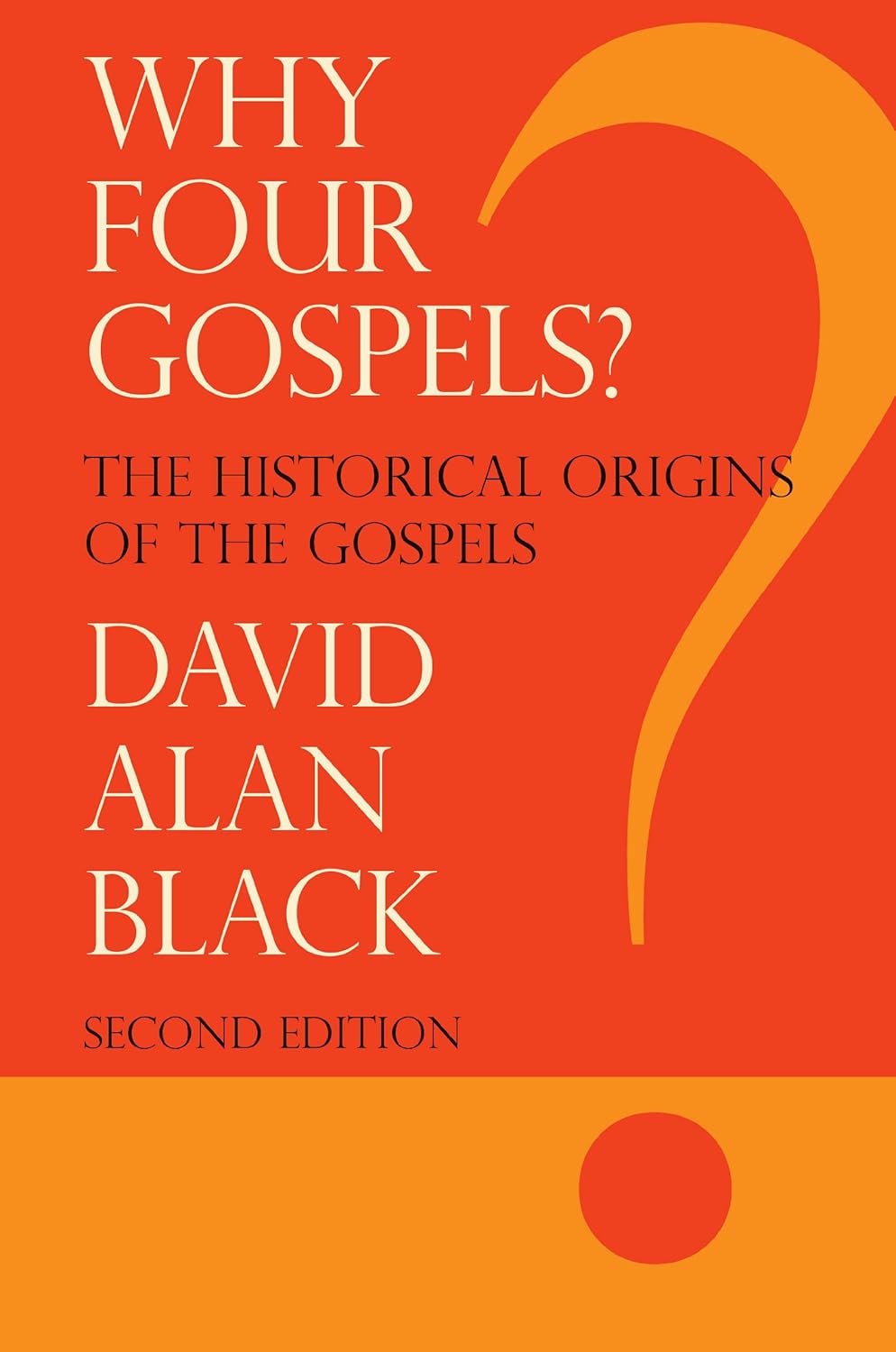

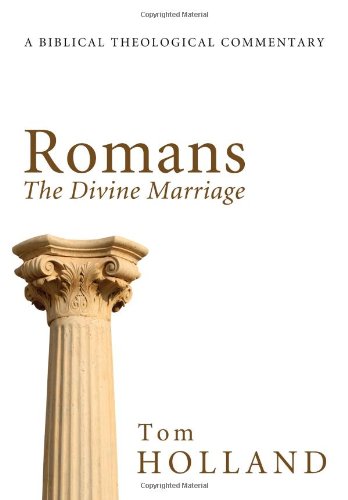
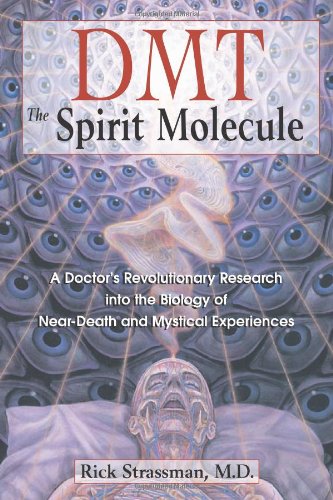

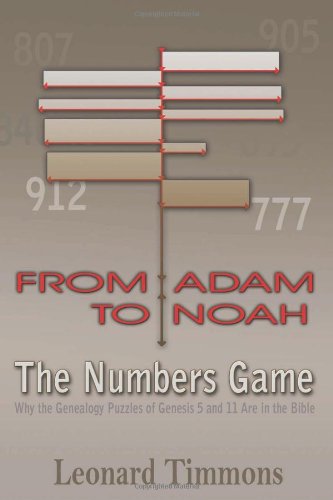

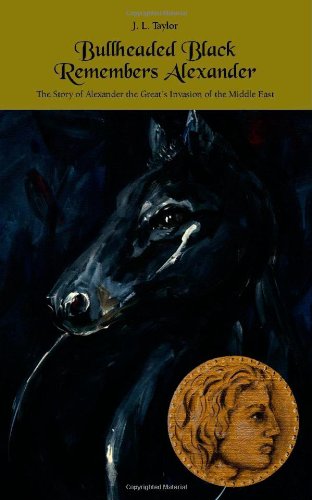


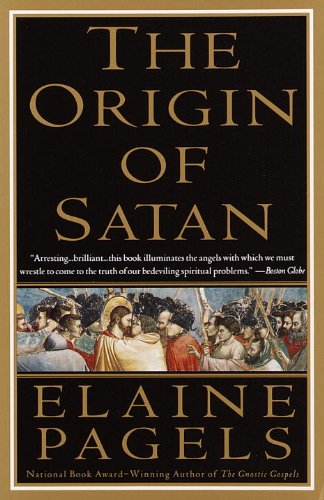


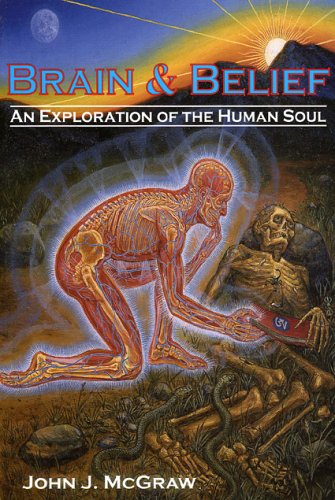

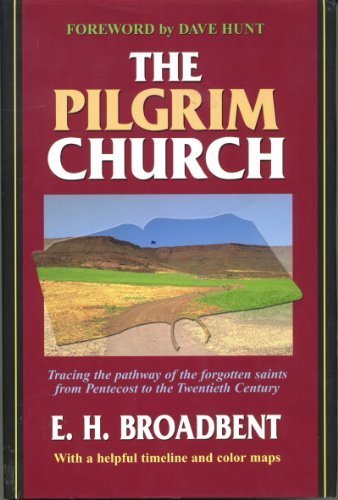












 354 Circles
354 Circles
 603 Goodreads Friends & Fans
603 Goodreads Friends & Fans

 Hello! I'm an author, historical Jesus scholar, book reviewer, and liberal Christian, which means I appreciate and attempt to exercise the humanitarian teachings of Jesus without getting hung up on any particular supernatural or religious beliefs.
The Bible is a magnificent book that has inspired and spiritually fed generations for thousands of years, and each new century seems to bring a deeper understanding of life’s purpose. This is true of not only Christianity; through the years, our age-old religions are slowly transforming from superstitious rituals into humanitarian philosophies. In short, we are growing up, and I am thrilled to be riding the wave.
I avidly read all thought-provoking religion titles. New authors: I'd love to read and review your book!
Hello! I'm an author, historical Jesus scholar, book reviewer, and liberal Christian, which means I appreciate and attempt to exercise the humanitarian teachings of Jesus without getting hung up on any particular supernatural or religious beliefs.
The Bible is a magnificent book that has inspired and spiritually fed generations for thousands of years, and each new century seems to bring a deeper understanding of life’s purpose. This is true of not only Christianity; through the years, our age-old religions are slowly transforming from superstitious rituals into humanitarian philosophies. In short, we are growing up, and I am thrilled to be riding the wave.
I avidly read all thought-provoking religion titles. New authors: I'd love to read and review your book!
 Hi! While Lee writes the articles and reviews the books, I edit, organize, and maintain the blog. The views expressed here are Lee's but I'm his biggest supporter! :-)
Hi! While Lee writes the articles and reviews the books, I edit, organize, and maintain the blog. The views expressed here are Lee's but I'm his biggest supporter! :-)
Connect With Me!